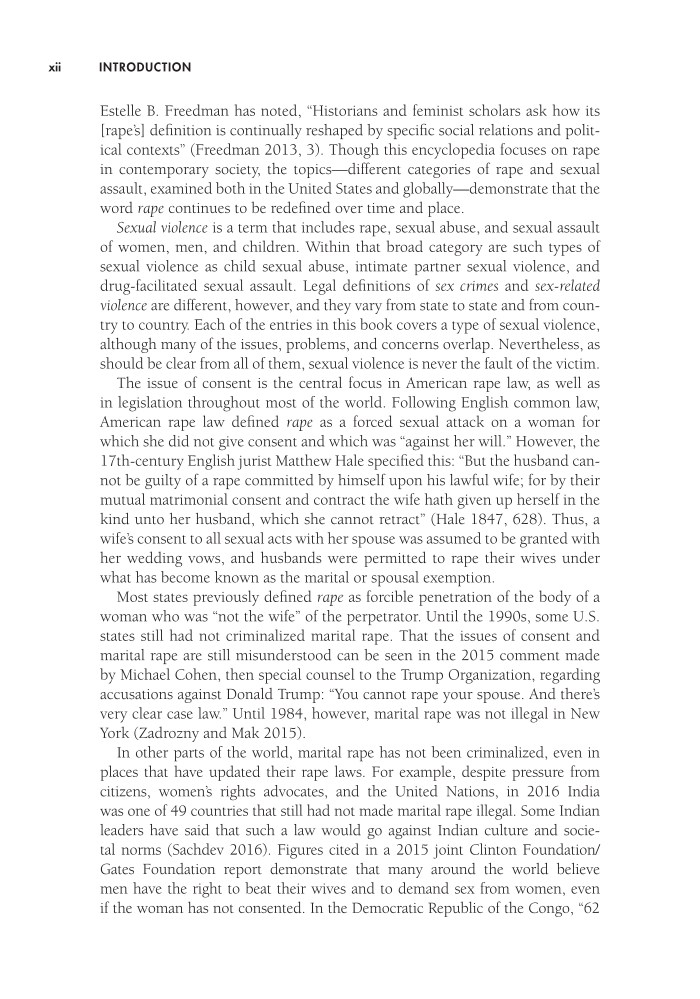xii Introduction Estelle B. Freedman has noted, “Historians and feminist scholars ask how its [rape’s] definition is continually reshaped by specific social relations and polit- ical contexts” (Freedman 2013, 3). Though this encyclopedia focuses on rape in contemporary society, the topics—different categories of rape and sexual assault, examined both in the United States and globally—demonstrate that the word rape continues to be redefined over time and place. Sexual violence is a term that includes rape, sexual abuse, and sexual assault of women, men, and children. Within that broad category are such types of sexual violence as child sexual abuse, intimate partner sexual violence, and drug-facilitated sexual assault. Legal definitions of sex crimes and sex-related violence are different, however, and they vary from state to state and from coun- try to country. Each of the entries in this book covers a type of sexual violence, although many of the issues, problems, and concerns overlap. Nevertheless, as should be clear from all of them, sexual violence is never the fault of the victim. The issue of consent is the central focus in American rape law, as well as in legislation throughout most of the world. Following English common law, American rape law defined rape as a forced sexual attack on a woman for which she did not give consent and which was “against her will.” However, the 17th-century English jurist Matthew Hale specified this: “But the husband can- not be guilty of a rape committed by himself upon his lawful wife for by their mutual matrimonial consent and contract the wife hath given up herself in the kind unto her husband, which she cannot retract” (Hale 1847, 628). Thus, a wife’s consent to all sexual acts with her spouse was assumed to be granted with her wedding vows, and husbands were permitted to rape their wives under what has become known as the marital or spousal exemption. Most states previously defined rape as forcible penetration of the body of a woman who was “not the wife” of the perpetrator. Until the 1990s, some U.S. states still had not criminalized marital rape. That the issues of consent and marital rape are still misunderstood can be seen in the 2015 comment made by Michael Cohen, then special counsel to the Trump Organization, regarding accusations against Donald Trump: “You cannot rape your spouse. And there’s very clear case law.” Until 1984, however, marital rape was not illegal in New York (Zadrozny and Mak 2015). In other parts of the world, marital rape has not been criminalized, even in places that have updated their rape laws. For example, despite pressure from citizens, women’s rights advocates, and the United Nations, in 2016 India was one of 49 countries that still had not made marital rape illegal. Some Indian leaders have said that such a law would go against Indian culture and socie- tal norms (Sachdev 2016). Figures cited in a 2015 joint Clinton Foundation/ Gates Foundation report demonstrate that many around the world believe men have the right to beat their wives and to demand sex from women, even if the woman has not consented. In the Democratic Republic of the Congo, “62
Document Details My Account Print multiple pages
Print
You have printed 0 times in the last 24 hours.
Your print count will reset on at .
You may print 0 more time(s) before then.
You may print a maximum of 0 pages at a time.


























































































































































































































































































































































































































































































































































































































































































































